NATO's universal mobile howitzer
The M109 was, is and will be probably for years still, the most prolific self-propelled howitzer outside the Soviet Union. Although its first drawings and specifications dates back from 1959, it was upgraded to such extent that it is still today in service, upgraded time and again and integrating the best technologies each era had to offer. It was sold to about 40 countries worldwide, including several NATO's members. Its best equivalent in popularity was the Soviet 2S1-2S3 family. It also left a durable imprint on the genre, a standard upon which other SPHs were compared in the Western bloc. A veteran of Vietnam, it saw action in the Yom Kippur War, Iran-Iraq war, the gulf war and invasion of Iraq until 2014.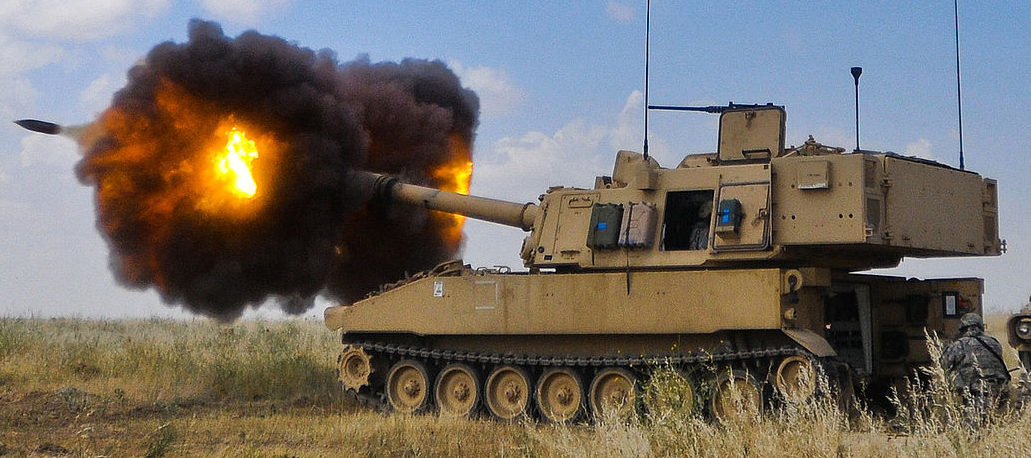
Origins of the program
Self-propelled howitzers have been in use with the US Army in abundant types during ww2. The best-known was the M7 "Priest". But alongside, self-propelled heavy howitzer in the 155 mm to 203 mm range were also built in small quantities. Their main problem was their complete lack of protection. In the 1950s a program geared towards the modernization of the type was launched. The M109 became the medium variant of a common chassis to be adopted for all self-propelled artillery types and calibers.Ultimately the light version M108 Howitzer was built and tested in the Vietnam War, but failed to impress and was discarded. Meanwhile, the XM109 was tested and improved, leading to the model developed by the Ground System Division of United Defense LP. The first production model standardized as the M109 was accepted in 1963, and since more than 7,700 had been delivered and improved through the years. The name "Paladin" corresponds to the actual version in service in the US (and previous reference upgrade program), M109A5+ or A6. The regular army designation always has been officially "M109 self-propelled howitzer". In medieval times, the Paladin was a noble bodyguard (originally Charlemagne's fabled twelve peers) later revived in the Arthurian cycle.
Design of the M109
General design
The hull was entirely custom-built but shared many components with the M108, while both shared these with the M113. It is of prismatic shape at the front, but boxy with side and rear flat plates. The driver is located to the front left, have its own sliding hatch and three vision blocks (central IR one). The engine is located to the front and therefore plays as a buffer in case of a direct line of sight hit for the crew at the rear. The fighting compartment is right below the turret which represent 3/5 of the total length of the vehicle. The turret itself which provides the howitzer a full 360° has a rounded front section, but is boxy in shape all around.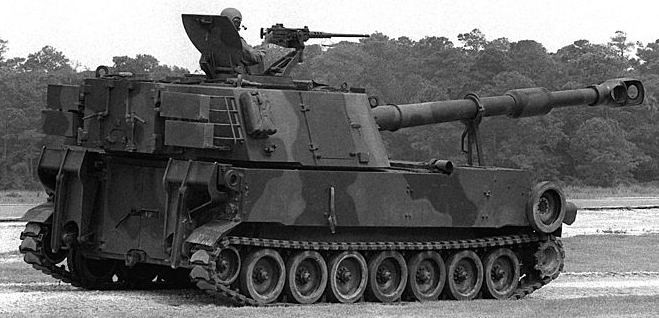
Protection and crew
Armour is made of reinforced Rolled 5083 aluminum alloy (like the M113) assembled by Welding. Its thickness varies from 1.25"/75° (32 mm) on the upper and lower front, but also sides, rear, top and floor of the hull and same on the turret (angled 22° front and sides). The crew of six comprised the section chief, driver, gunner, assistant gunner and two ammunition handlers. In operation, the gunner aims the cannon traverse only while the assistant gunner aims the elevation (quadrant). This crew was reduced to only four on the M109A5 due to some automation which only the gunner and ammunition loader. NBC protection was individual up to the M109A4 variant where it became collective with sealed hatches and overpressure. Air climates were also introduced early on.Armament
The main gun is an M126 155 mm howitzer L/39 caliber with breech interrupted screw and separate loading, bagged charge. It is fitted with both a double-baffled muzzle brake and gas chamber bore evacuator (which changed in type and performance over time) to reduce recoil. Maximal elevation for the gun is a good 75° (later improved). It goes down to a -3° depression with a hydraulic and manual backup system. Maximum fire rate is 6 rpm and Sustained 3 rpm (that too was improved with the M109A5). Max traverse speed was 11°/sec. and max elevation speed was 7°/sec.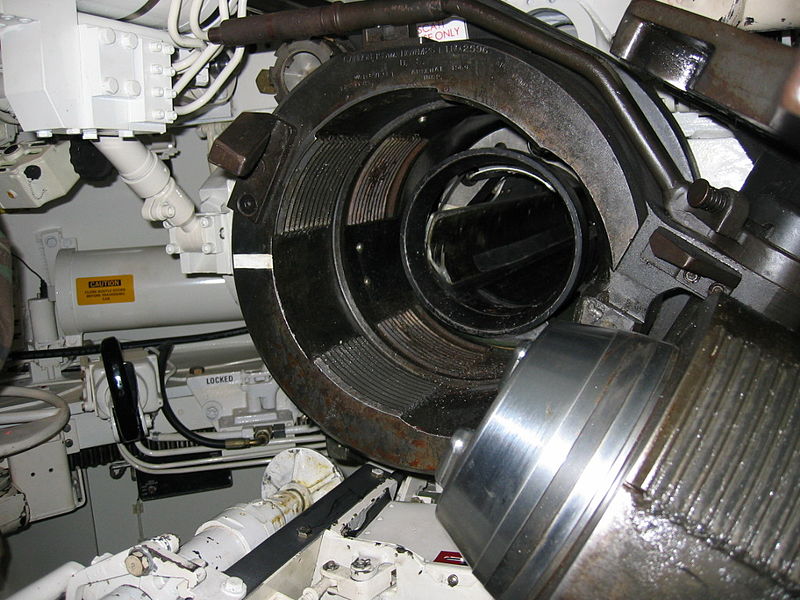
Open breech of the howitzer
The effective firing range was 18 km in the standard configuration (11 mi), but was improved with the arrival of the long barrel and enhanced ammunitions like the RAP: 30 km (19 mi). Some of the ammo improvements of the canceled Crusader program may pass in even greater range self-propelled guided ammunitions in the near future. Crucially, the howitzer was upgraded to the long barrel M126A1 (A1), M185 (A2/A3/A4), and eventually M284 (A5/A6) howitzer. Due to their size and separate propellants, only 28 rounds were carried, of the HE type, stored inside the walls of the hulls. For this reason, a mobile supply carrier was designed, the M992 FAASV. Secondary armament comprises a cal.50 (12.7 mm) Browning M2HB installed on a pintle arm welded to the base of the commander's cupola. It was supplied by 500 rounds in boxes. In alternative a Mk.19 Mod.3 40 mm Automatic Grenade Launcher, a 7.62 mm M60 light MG, an M240 machine gun or L4 Light machine gun could use the same pintle mount.
Mobility
The M109 engine was originally a General Motors diesel 8V71T 8 cylinder in vee, 2 cycle, supercharged. It gave a net horsepower of 345hp @2300rpm and gross HP of 405hp @2300rpm and net torque of 895 ft-lb@1600rpm. It was coupled with an Allison XTG-411-2A transmission with 4 ranges forward, 2 reverse, and mechanical steering wheel (clutch-brake 1st, 2nd, 1st reverse; geared steer 3, 4, 2nd reverse) and multiple discs brakes. Later it was upgraded to a Detroit Diesel 8V71T which developed 450 hp (335.56 kW) for a Power/weight of 18.7 hp/t.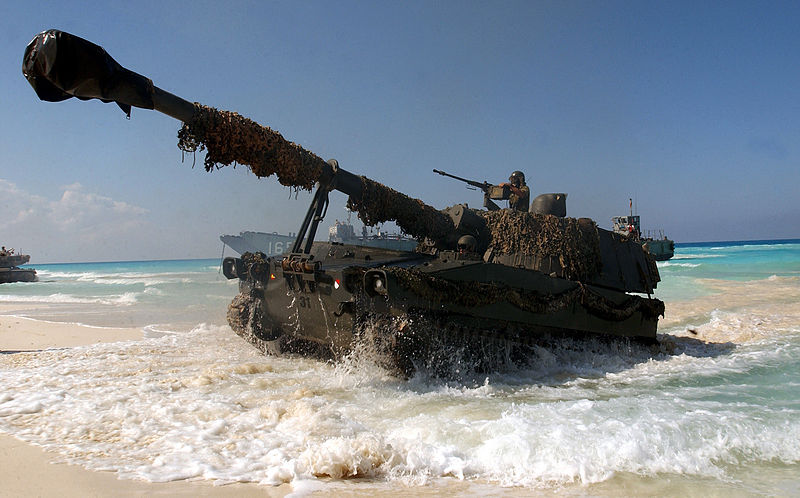
Spanish Marines M109A5 landing, exercise Bright Star 2001
The hull rests on seven roadwheels per side, of the stamped standard model of the M113, like the drive sprockets and idlers. These are suspended by torsion-bars, while two additional shock absorbers took place in addition at the front and rear, on the first and last of the roadwheels. Tracks were of the T136/137 type, with 79 center guide, double pin, steel with detachable rubber pad links, 15" in width (38 cm), with a 6" (6 cm) pitch, and a full contact length of 156" (3,96 m). Operational range is about 216 mi (350 km) and top speed 35 mph (56 km/h). Field performances tests shown that the M109 could climb a max grade of 60%, cross a trench 1.80 m wide, climb a 53 cm high obstacle, of ford 1.10 m deep of water without preparation. It was made amphibious but necessitated flotation screens and extensive preparation.
Variants
M109 (1963)
The first original version produced in 1963 by the Cadillac Motor Car and Allison Divisions of General Motors Corp. and Chrysler Corp. It has the first M126 howitzer type (short barrel) on an M127 Howitzer Mount. It also had stabilization spades on each corner of the hull rear.M109A1 (1973)
The main difference was the long barrel M126A1 howitzer to provide a far greater effective range. It shares however the same M127 mount and ammunition (still 28). For export solely an improved variant was designed on the M109A1 basis, with the M109A1B designation. It was one ton heavier (24 vs 23 tonnes).M109A2 (1976)
Integrates 27 Reliability, Availability, and Maintainability (RAM) mid-life improvements. The most important were the replacement of the Howitzer by the M185 cannon and the M178 gun mount. other major improvements were the panoramic telescope ballistic protection, the counterbalanced travel lock, and optional M140 alignment device. Ammo stowage was raised from 28 to 36 rounds.M109A3
This is the designation for the retroactive upgrade of the M109A1/A1B to the M109A2 standard.M109A4
Emphasis was put on protection with the NBC/RAM programme (Nuclear, Biological, and Chemical and Reliability Availability, Maintainability). Including air purifiers and heaters were installed as well as the Mission Oriented Protective Posture (MOPP) gear. The traverse mechanism goes to hydraulic rather than electric with a manual override. An additional hydraulic filter was also added. The Engine starter was also improved, allowing an emergency start.M109A5 (1985?)
The A5 is the last cold war version of the M109, with a new M182 mount and 155 mm M284 39 cal. cannon for an effective max range of 23,5 km in standard, but 30 km with Rocket Assisted Projectiles (RAP Rounds). The main engine was also upgraded to a Detroit 440hp diesel. The A5+ was introduced in the 1990s with a wide range of improvements, notably electronics and more modern FCS (by BAE Systems), aimed at export. This was also proposed as a conversion for regular M109A5.M109A6 Paladin (1992)
The modern version of the M109, manufactured by BMY Combat Systems and United Defense L.P. This one includes add-on armor, improved M284 cannon and M182A1 mount, safer internal ammo storage arrangement (and three more rounds), plus engine and suspension upgrades. For the first time, an inertial navigation system was introduced whereas the gun received sensors to detect the main gun alignment, improved wind and temperature sensors but also a fully automated laying system. There is also an encrypted digital communication system, with counter ECM (electronic warfare) system, grid location and data transmitted to the battery FDC. The Paladin is able to stop and fire within 30 seconds with the same accuracy as before but largely improved when properly set up. Survivability as a whole is much improved on a tactical level.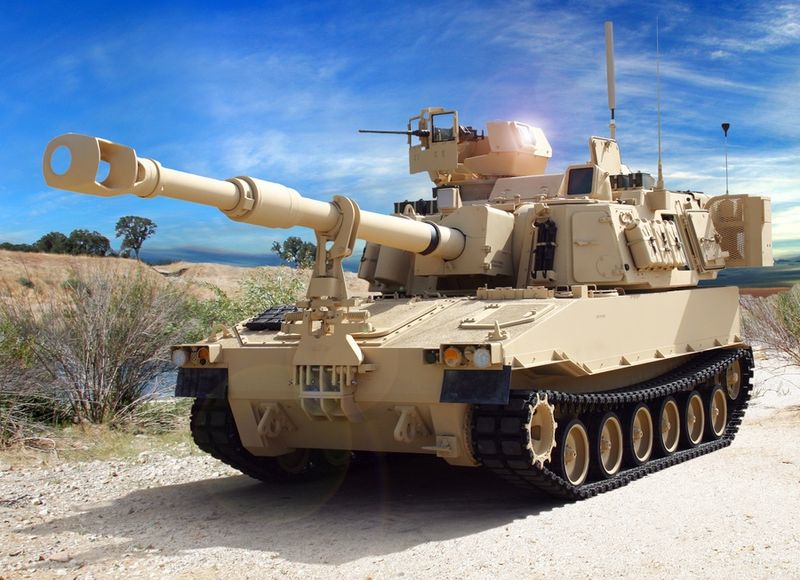
BAE Paladin Integrated Management M109A7 upgrade (2013)
M109A7 (2013)
Due to the cancellation of new programs like the Crusader and Non-Line-of-Sight Cannon, the former M109A6 Paladin Integrated Management (PIM) was reactivated and extended to a full-blown modernization. A commonality of components with the Bradley IFV such as the engine, transmission, and tracks was part of this upgrade for costs-savings in production and maintenance personnel. The on-board power systems are completely overhauled with a much faster electric drive system for the turret traverse, better automatic rammer (1 rpm, max 4 rpm) and better accuracy overall. There is also an additional power for future upgrades with a 600-volt on-board system. It is also 35 tonnes (4,5 tonne heavier) but the engine improvements meant it can travel 38 mph (61 km/h) and is more maneuverable, even than a Bradley. By 2013 after testing of prototypes, production was approved with a procurement of 580 M109A7 and M992A3 ammunition support vehicles. The FY 2014 budget called for $340.8 million ($14.4 million per vehicle) The test phase is not yet even closed. The full-rate production decision is therefore planned for February 2017. BAE started a low-rate delivery April 2015.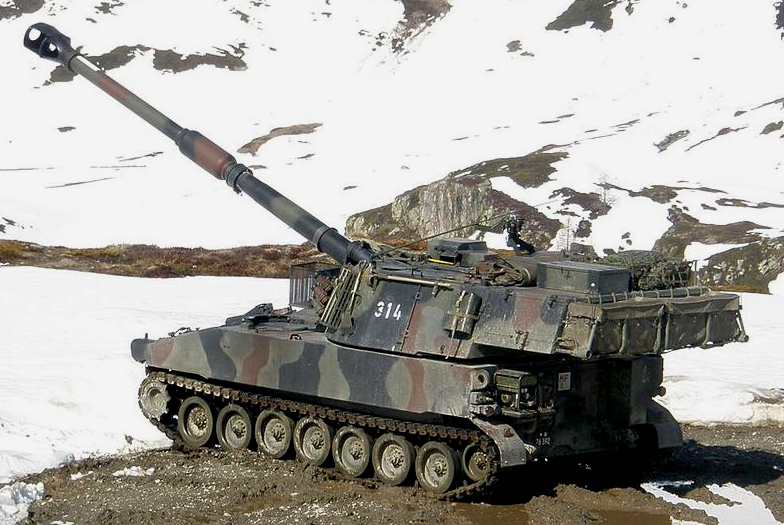
Swiss M109 KAWEST
KAWEST (1995)
This is the Name for the Swiss 224 M109A1 fully upgraded ((lit. Kampfwertsteigerung = upgrade of combat capabilities). Ruag created a Swiss-designed L47 155 mm gun which had an increased firing range of up to 36 km. It was given the Bison inertial navigation and positioning system, a new gun-laying system and increased ammunition stowage, a new electrical system, a fault-finding diagnostic system. The crew was reduced to 6 whereas the rate of fire is about 3-round bursts within 15 seconds or one rpm in saturation, sustained fire. Gears and engine were improved as well as the day and night operations capabilities. A better fire suppression system was installed for crew protection along with upgraded NEMP and EMP systems. In Swiss service, they are known as the Panzerhaubitze 79/95 and PzHb 88/95.Other variants
The M109L52 (2002) is a joint Dutch-German upgrade programme for their respective M109s. This version integrates the PzH 2000 main gun and its MTLS ammunition (35 rounds) for an extended operational firing range and automated loading system. Therefore, providing a 9–10 rds/min rate of fire. The K55/K55A1 is the South Korean version, produced locally under license by Samsung Techwin since the 1980s. It is based on the A2 but integrates local improvements such as the NBC protection, automatic fire extinguishing system, and modified ammunition reception module to be used with the K56 automated supply vehicle. The K55A1 appeared more recently with FCS improvements such as the Samsung Thales modern digital ballistic computer and FCS and multifunctional data display/controllers, Gas well as a modern GPS inertial navigation/positioning systems aand target acquisition system, plus wireless datalink equipment among others. Later on, many improvements of the K9 Thunder SPG were passed onto the K55A1.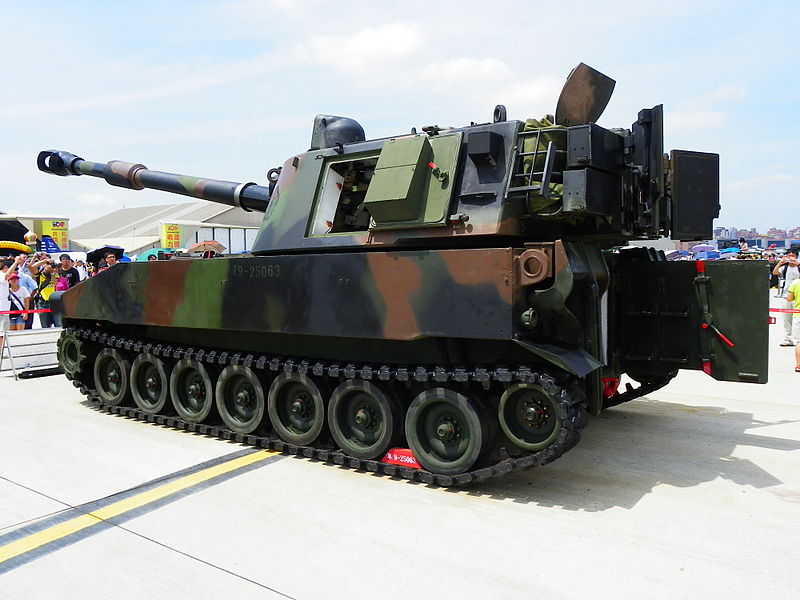
ROKS M109A2 in an exhibition - 2011 Songshan Air Force Base camp opening event.
Operators
Europe
-Austria received 80 A2 later upgraded to the A5Ö standard.-Belgium received 64 A4BE and 127 A2 (upgraded to the -A4BE standard the remainder now decommissioned or sold to Brazil)
-Denmark ordered 12 A2/A3 later upgraded to M109 A3DK standard.
-Germany had 570 A3GE A1/A2 (phased out 2007) replaced by the PzH 2000.
-Greece ordered 51 M109A1B, but also 84 M109A2, 50 M109A3GEA1, 223 A3GEA2 and 12 A5 still in service today.
-Italy ordered 221 M109A2 later updated as the M109EL with an Italian made 155 mm/39 calibre barrel
-Netherlands had 126 A2/90 now phased or replaced by the PzH 2000
-Norway ordered 14 M109A3GNM
-Portugal ordered six M109A2 (1981) now used for training and 18 A5 (2002) including former A2 upgraded.
-Spain ordered six M109A2 for the Spanish Marines and have 96 M109A5 for the Army.
-The British Army replaced its 140+ M109s (some sold to Austria) with the AS-90.
-Switzerland as seen above ordered 224A1 upgraded to M109 KAWEST from 1995.
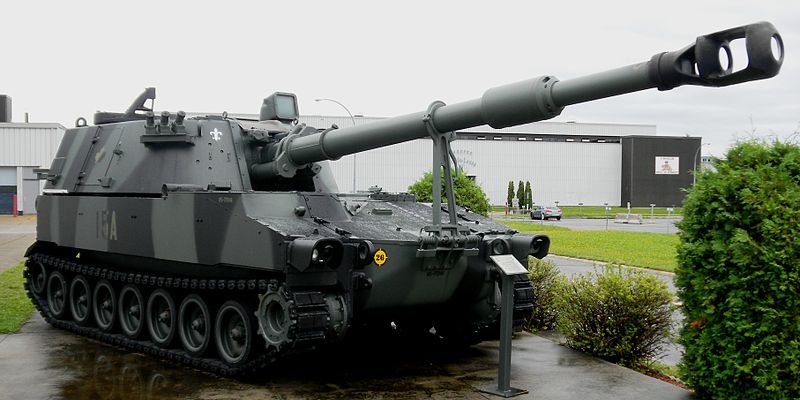
Americas
The U.S. Army was without surprise the main customer for this tank, although today it counts only around for 929 upgraded M109A3-A6 and A7 on the grand total produced. The U.S. Crusader and the Non-Line-of-Sight Cannon programs were both abandoned by the Congress and therefore the Paladin remains the main type in use for the U.S. and it is assumed will still be in the foreseeable future. Outside the US, Chile has 48 vehicles, among which twenty-four modernized ex-Swiss vehicles (KAWEST), plus twelve A3 and 12 A5+ Paladin; and Peru acquired 12 M109A1, while Brazil purchased 40 M109A3 formerly Belgian and 36 surplus ex-US M109A5 in the process to be upgraded to the A5+ Paladin configuration.Canada purchased 76 M109 from 1967. They were phased out in 2005. All the vehicles had been modernized to the M109A4B+ standard in the 1980s and used mostly by the 4 Canadian Mechanized Brigade Group in Germany.
Middle East
-Iran had 390 M109A1 from the time of the Shah (before 1979). No information about their service readiness.-Iraq purchased (for the new Army) 24 A5
-Israel purchased 600 A5 in all.
-Jordan received 235 A2 and 121 A2-90 from Netherlands
-Kuwait had five M109A1B
-Oman had 15 M109A0 in service
-Lebanon purchased 12 M103A3 and also had 22 TBD
-Turkey: Had some M109s in service, never modernized. Probably phased out by now.
-Saudi Arabia purchased 60 A2s currently upgraded to A5s, 36 A5 and 300 A6
-The UAE had 40 M109A1 from Switzerland.
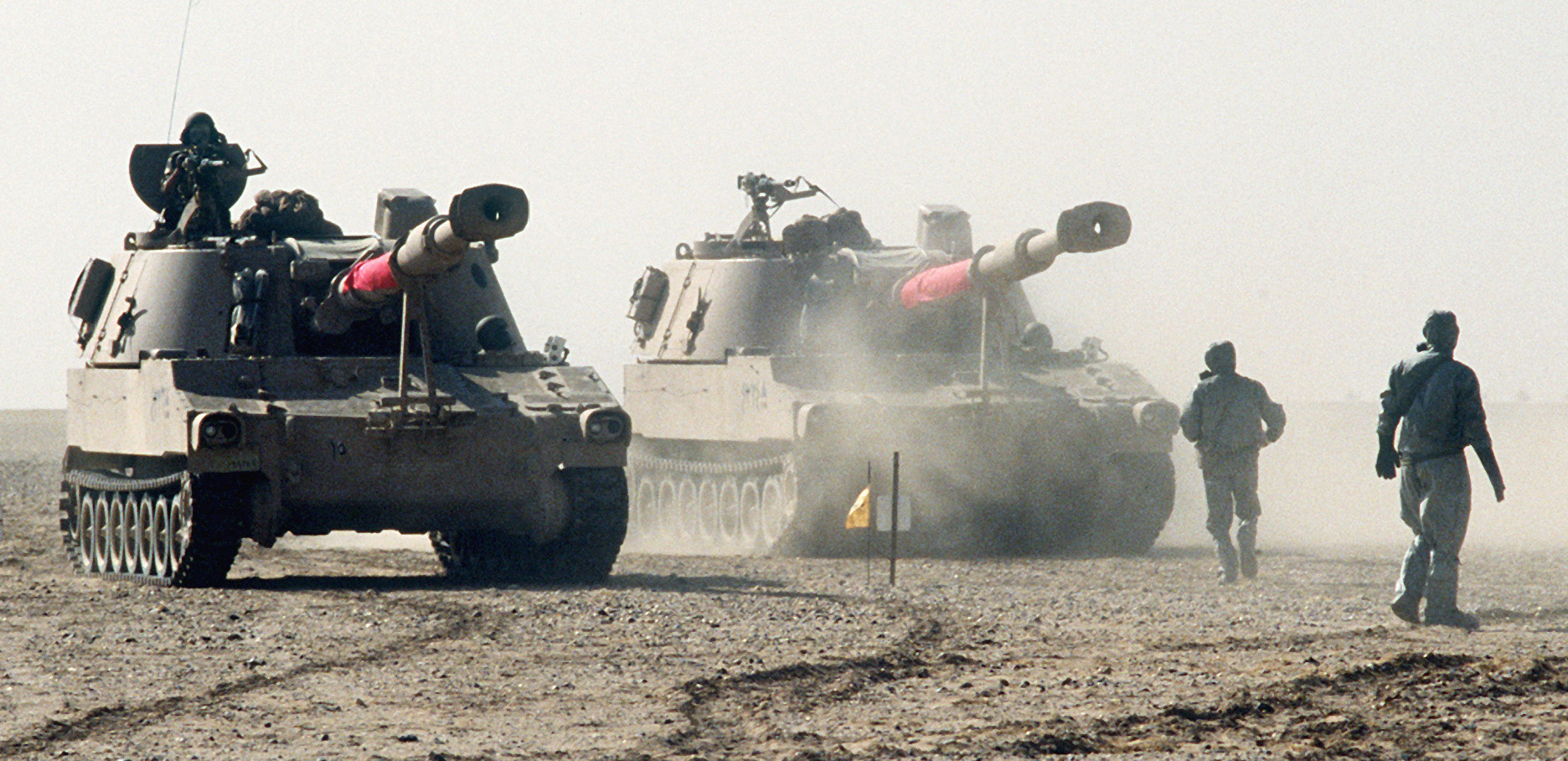
Africa
-Djibouti had 10 M109A1 in service-Egypt purchased 400 M109A2 and 201 M109A5
-Ethiopia purchased 17 M109A1
-Libya operated some M109s, without much precision.
-Morocco still operates 44 M109A1B, 78 M109A2, 22 M109A3, 40 M-109L47, 4 M109A4 and 60 M109A5 (total 248)
-Tunisia received 19 or 20 M109A2
Asia
-Pakistan purchased 150+A2 now upgraded to M109A5 standard and 115 A5.-Taiwan operates 225 A2/A5
-Thailand purchased 20 A5
-South Korea (Republic of Korea) purchased the A5 under license, 1,040 K55/K55A1 had been produced.
The M109 in action
The list of wars and military operation includes the Vietnam war (1965-73), the Yom Kippur War (1973), the Iran-Iraq War (1980-89), the Western Sahara War (Morocco vs Polisario 1975-91), the Gulf War (1991 in service with many Coalition nations), the Iraq War (2002-2014) and the Saudi Arabian-led intervention in Yemen (2015). This score is not close.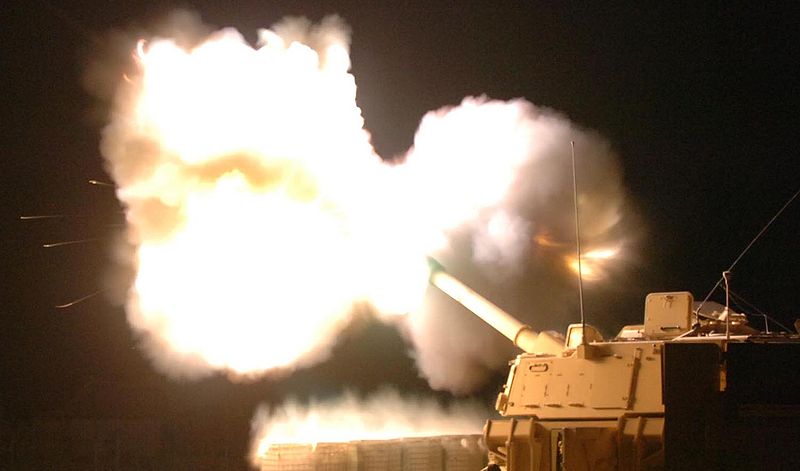
Links & references
The M109 on WikipediaXM2001 Crusader video (cancelled replacement program)
Article about the A7 upgrade (Defence Industry Daily)
More comprehensive specs on afvbd
Schematics and additional info (inetres.com)
Specifications |
|
| Dimensions | 9.1 x 3.15 x 3.25 (30 x 40.4 x 40.8 ft) |
| Total weight, battle ready | 27.5 tons |
| Crew | 6 (driver, cdr, gunner, assistant gunner, 2 loaders) |
| Propulsion | Detroit Diesel 8V71T 450 hp (335.56 kW) P/w 18.7 hp/t |
| Suspension | 7 Torsion bars, 4 shocks absorbers |
| Speed (road) | 56 km/h (35 mph) |
| Range | 350 km (216 mi) |
| Armament | 155 mm howitzer L/39, 1x M2HB HMG |
| Armor | 32 mm overall (1.25 in) |
| Total production | Approx 7,700 |
Guest Photo
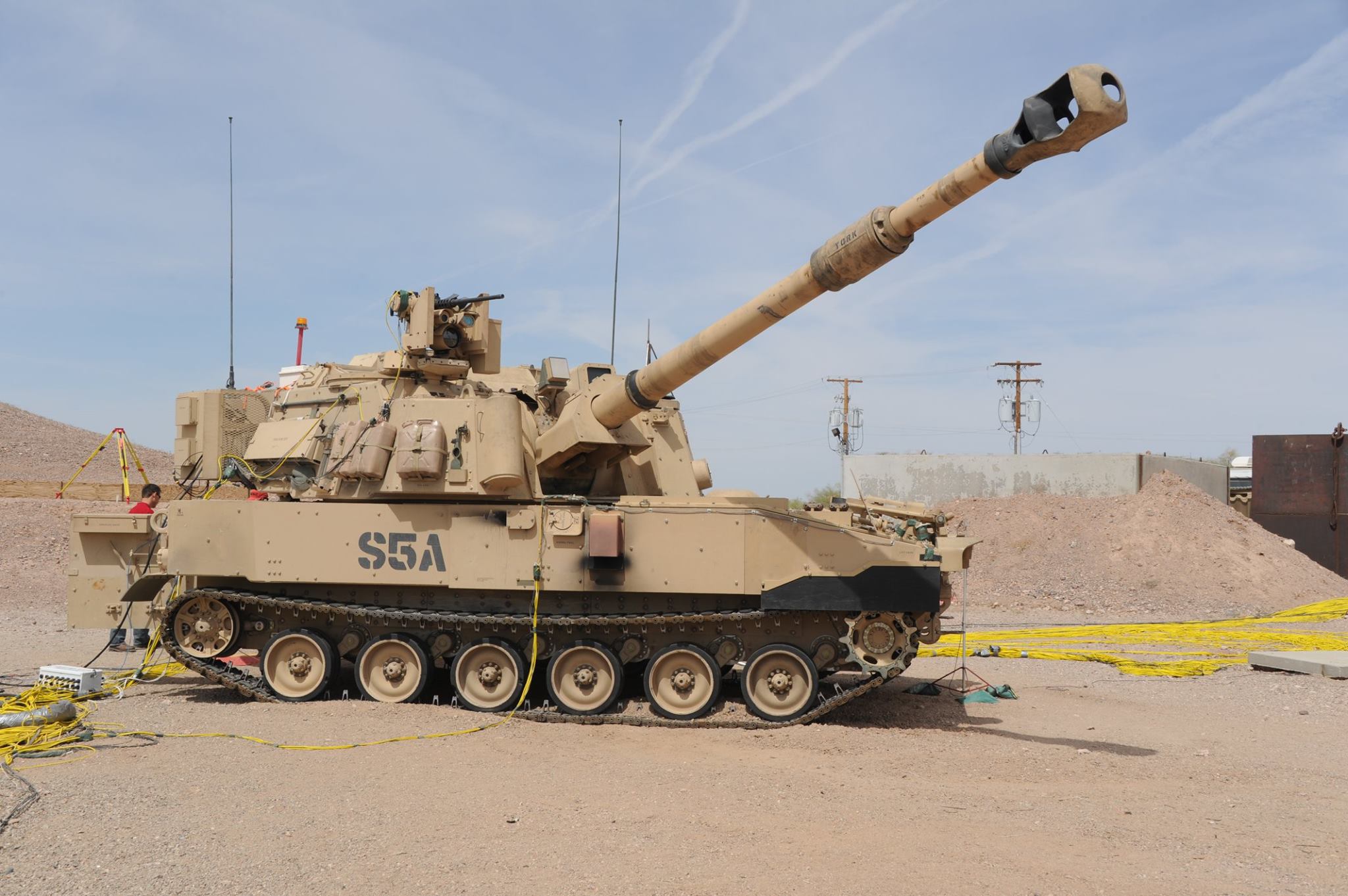
M109A7 at the Yuma Proving Ground, courtesy from Mark Holloway
Gallery
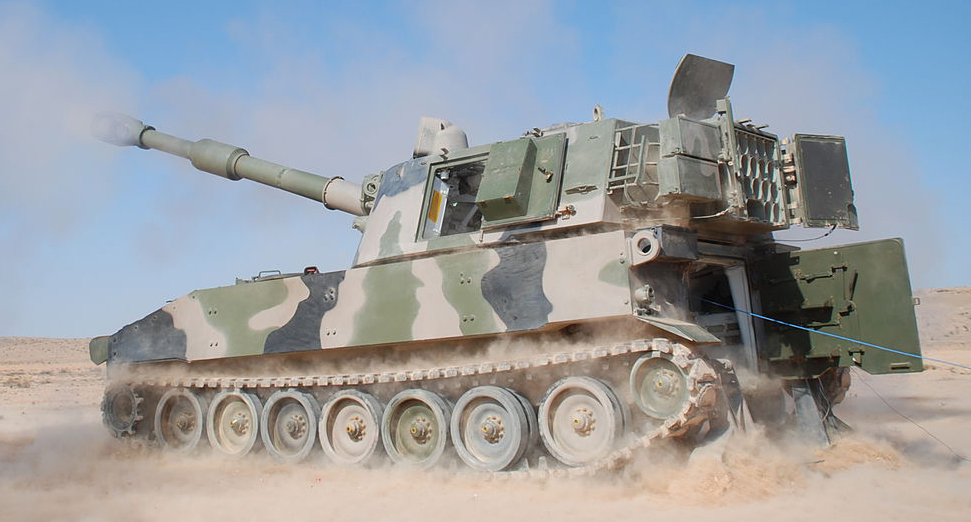
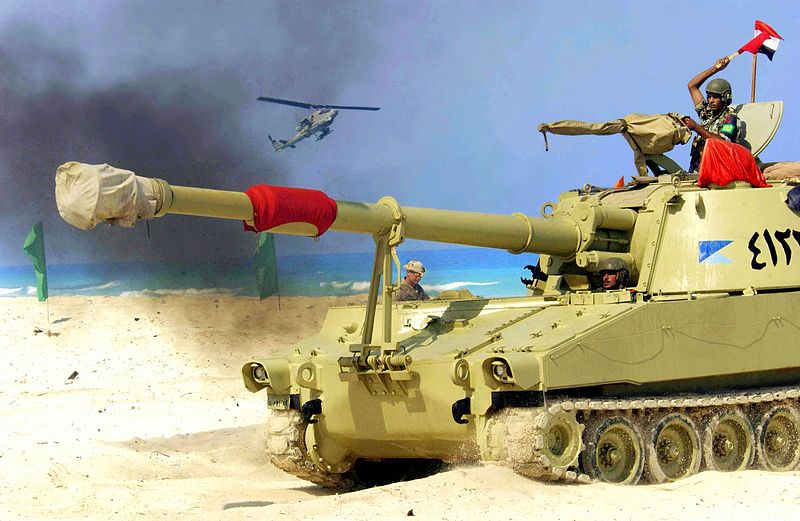
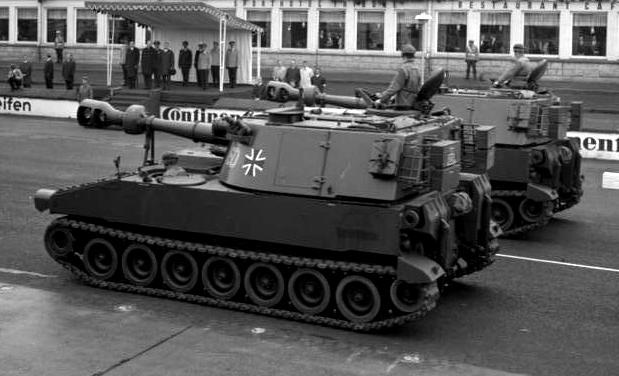
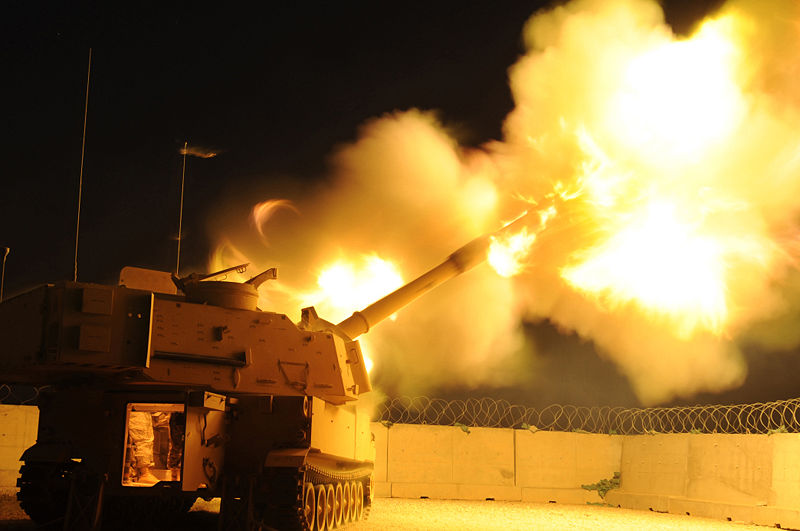
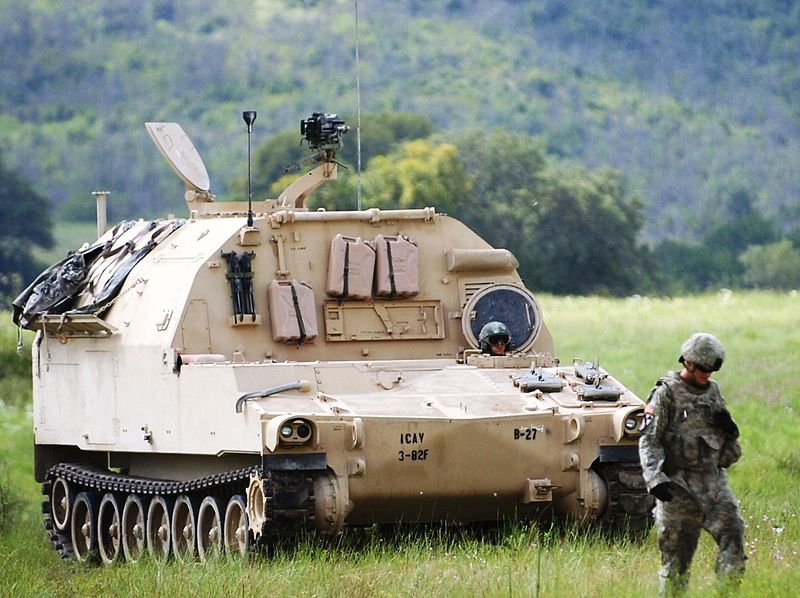
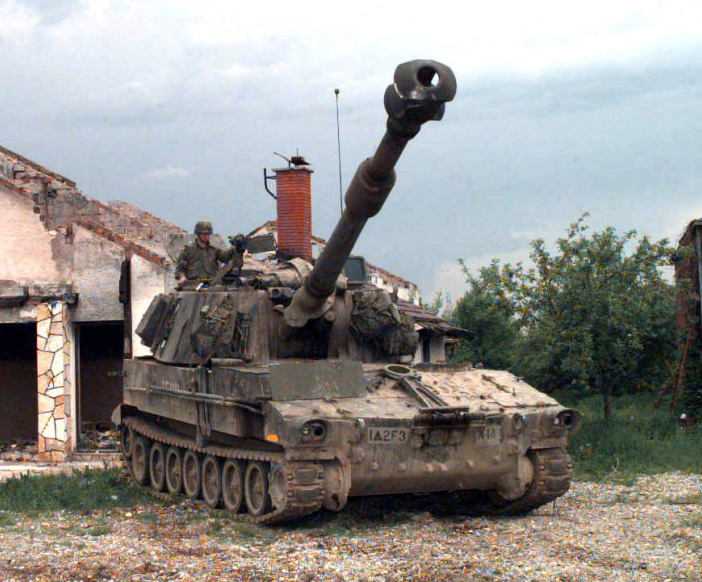
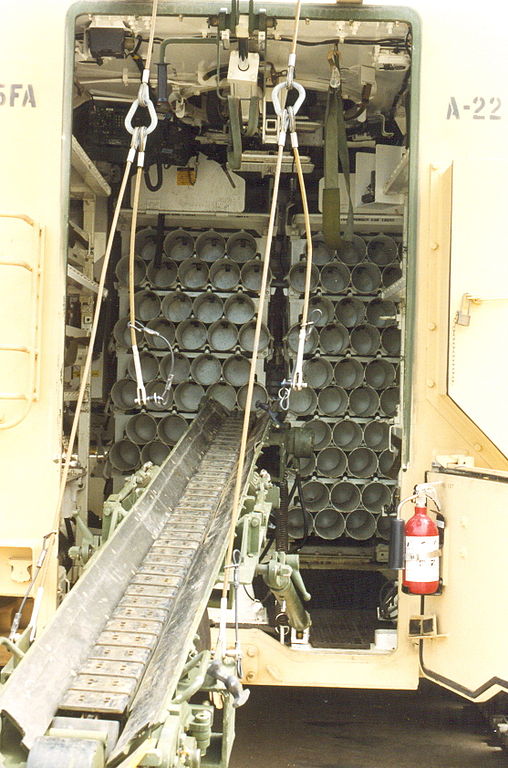
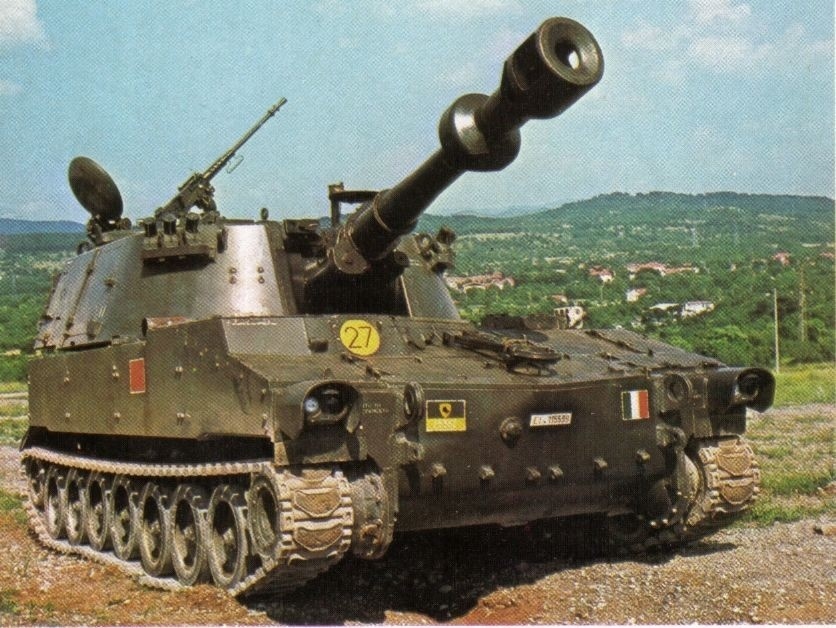
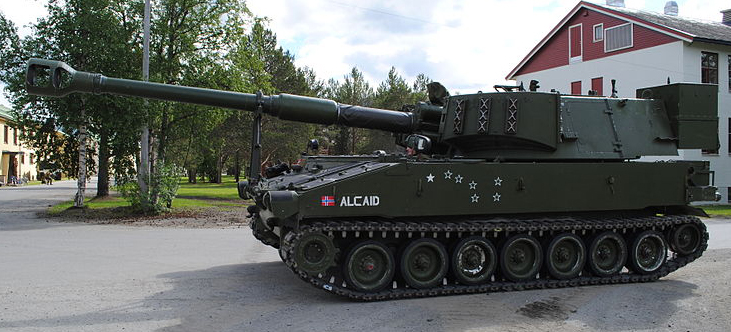
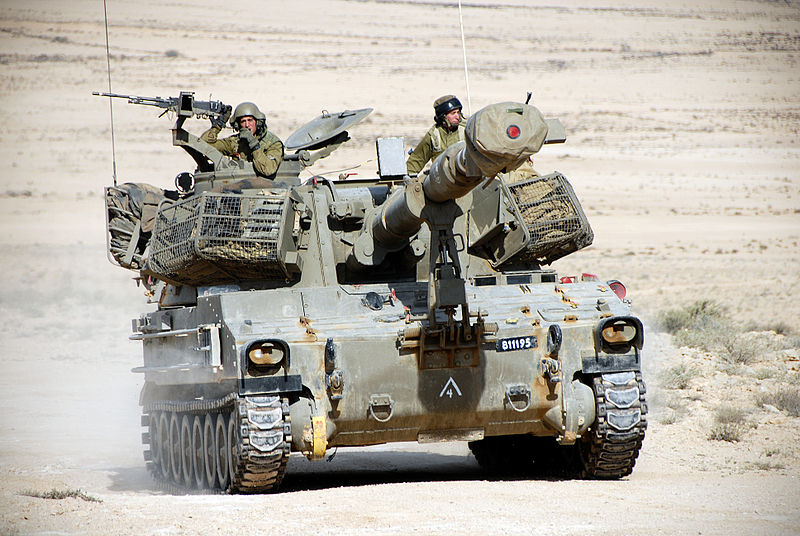
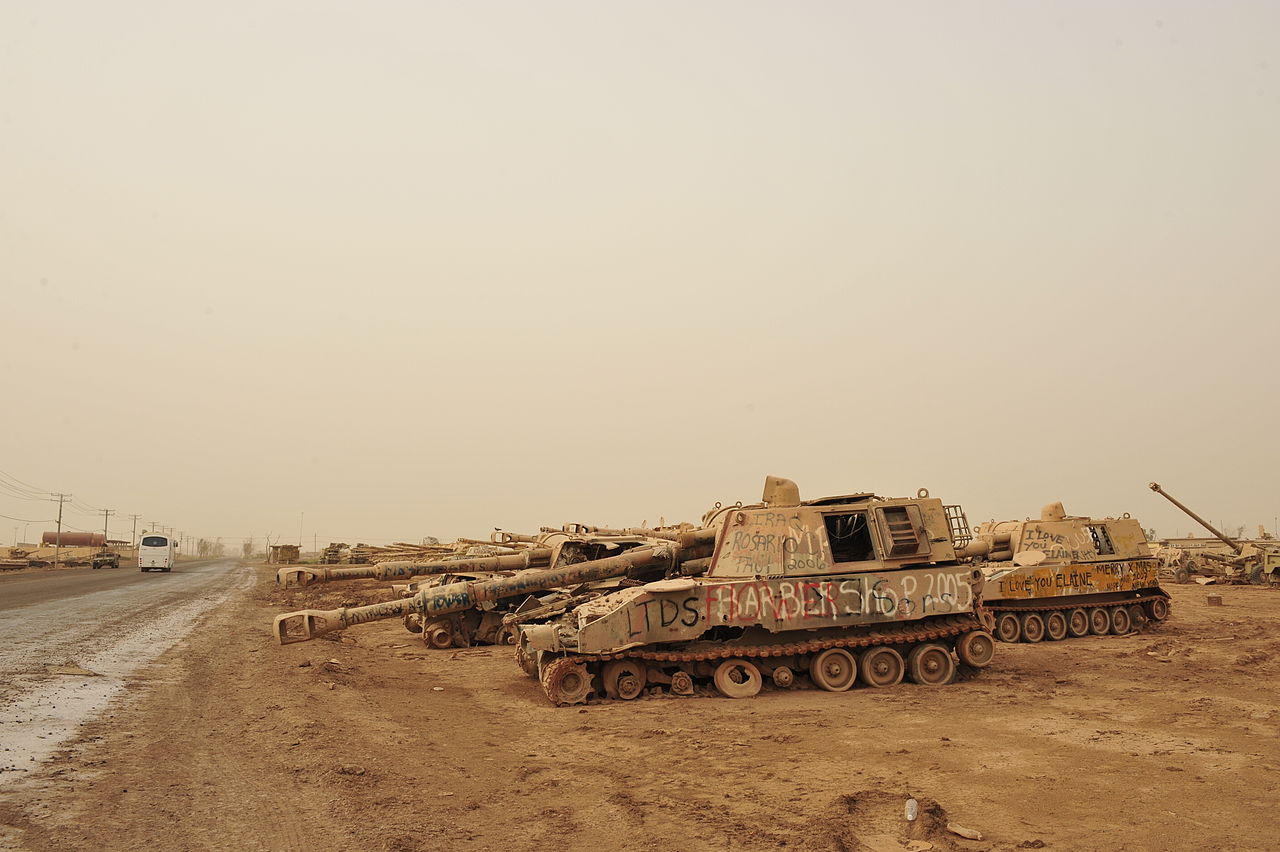
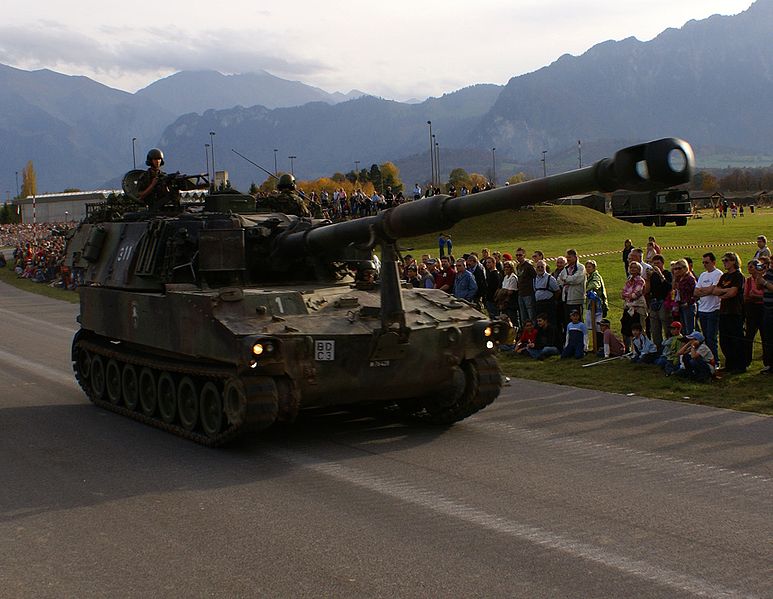
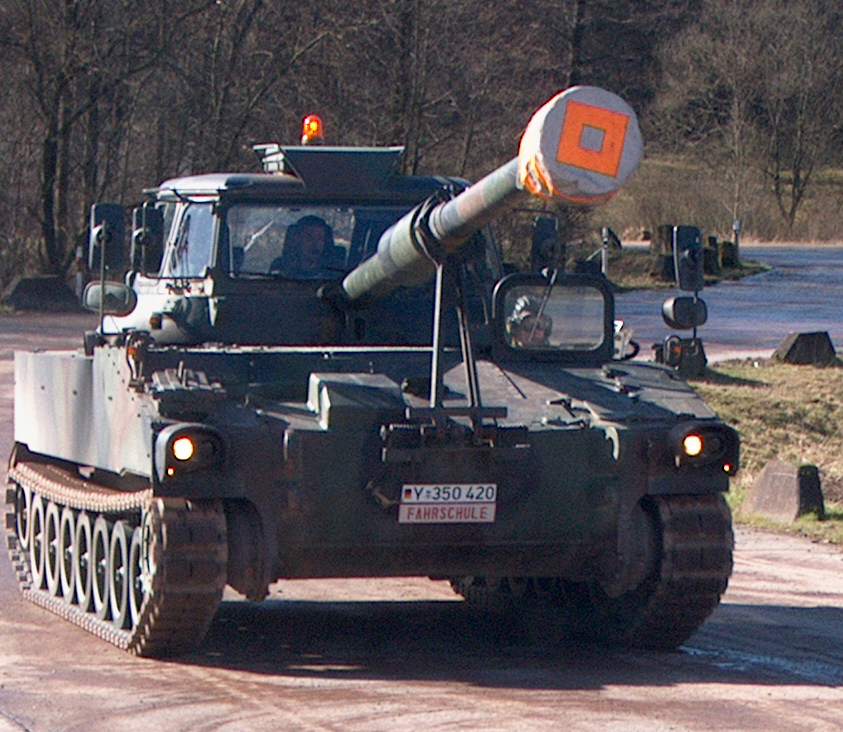
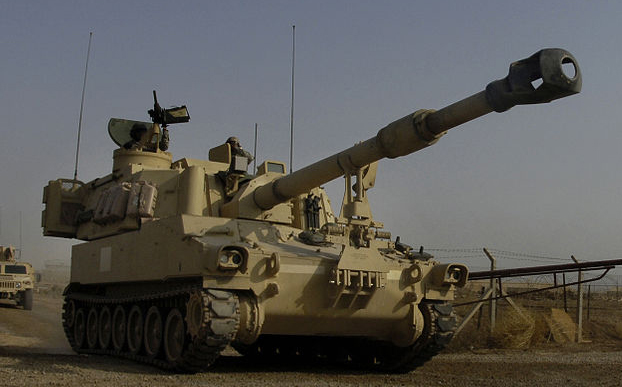
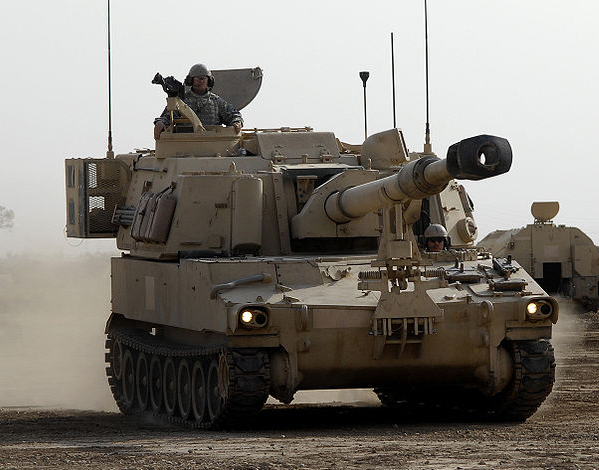
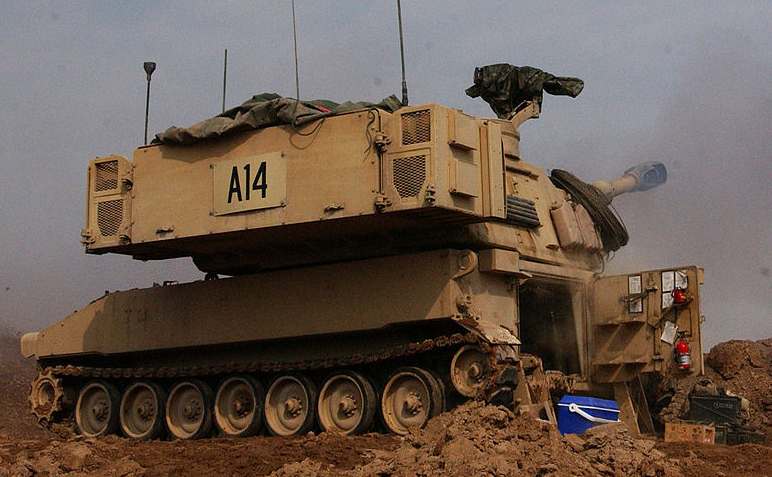
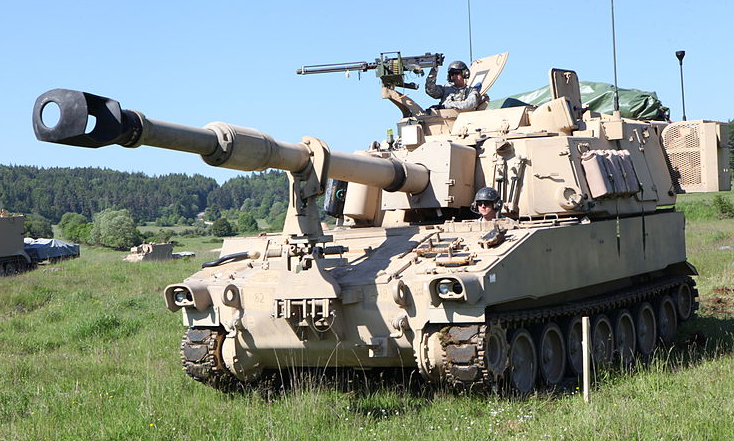
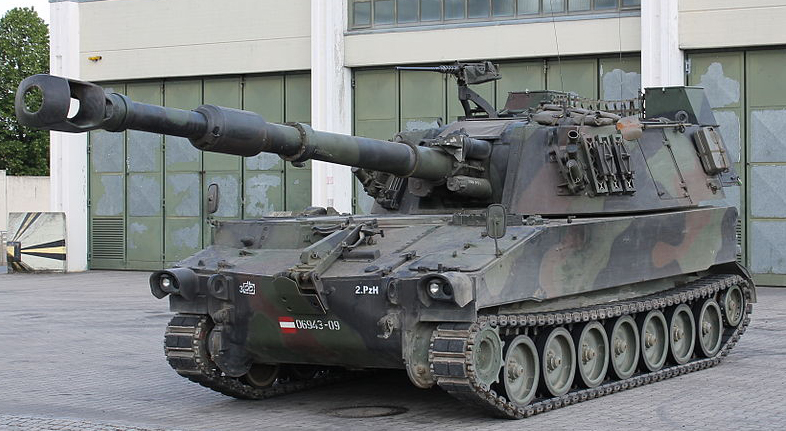
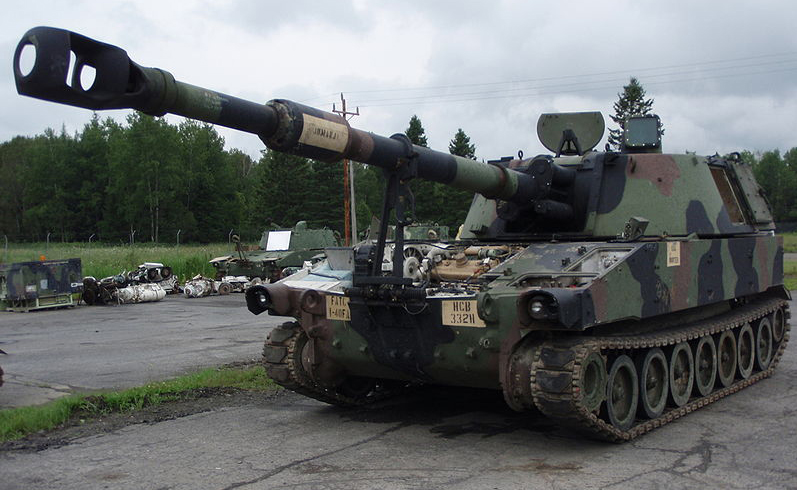
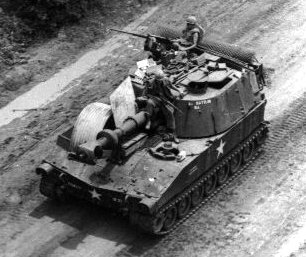
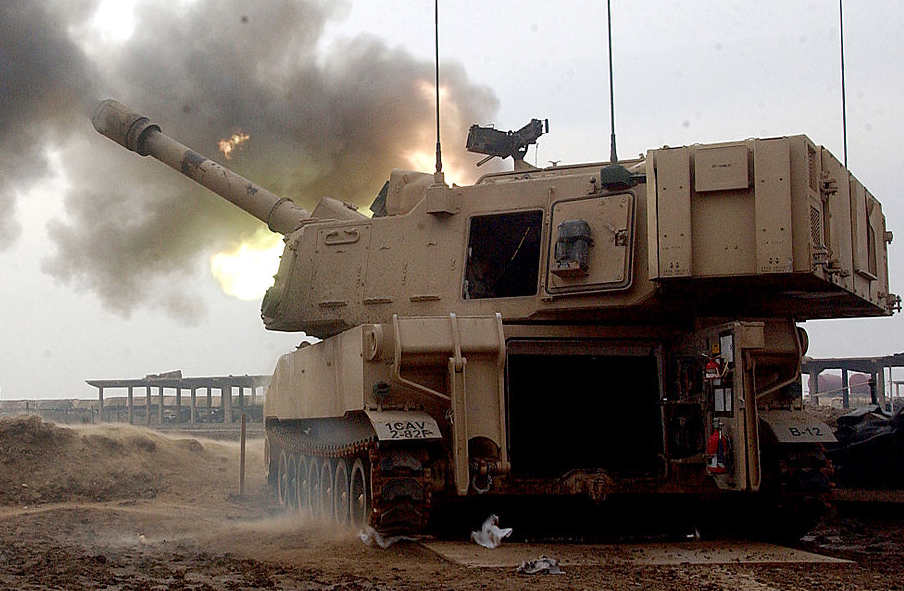
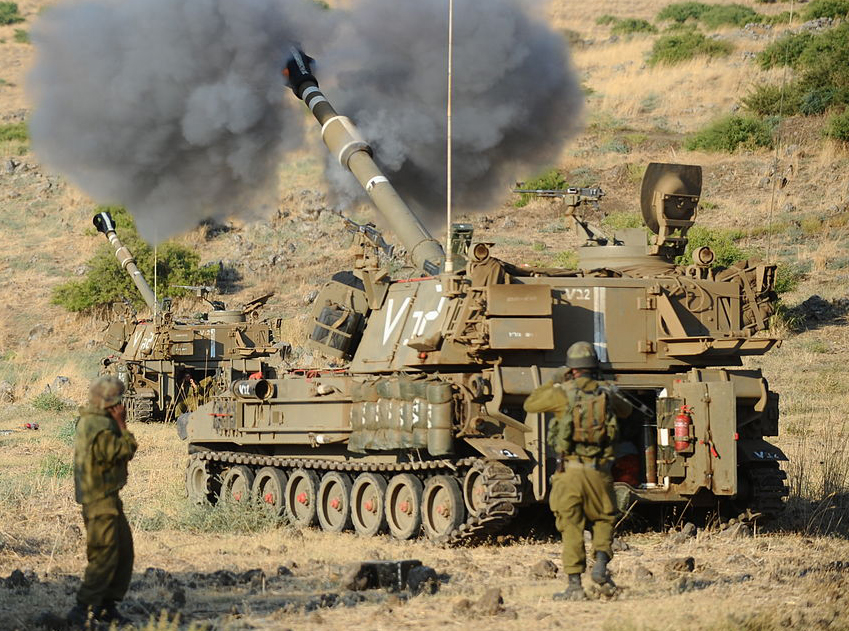
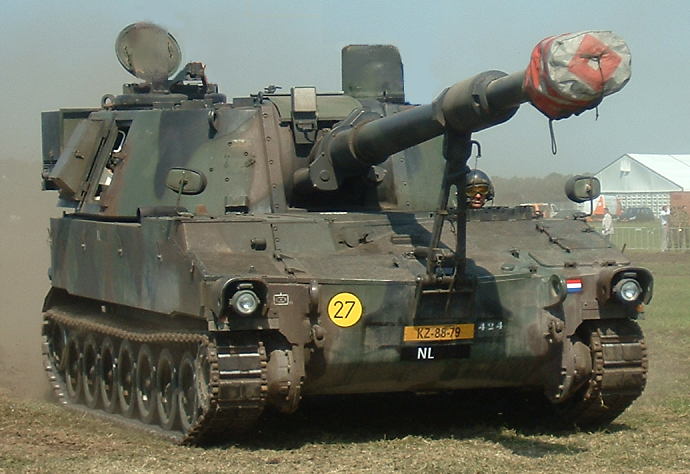
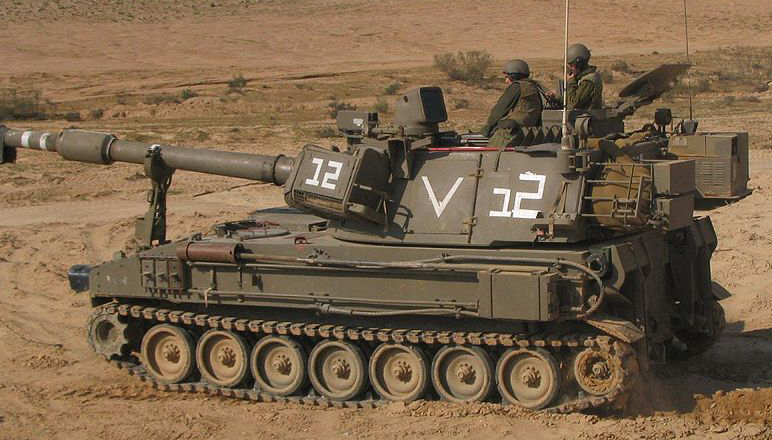
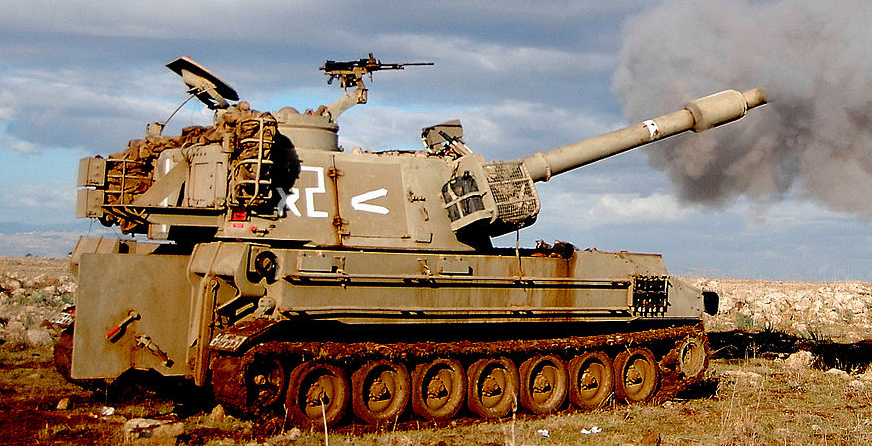
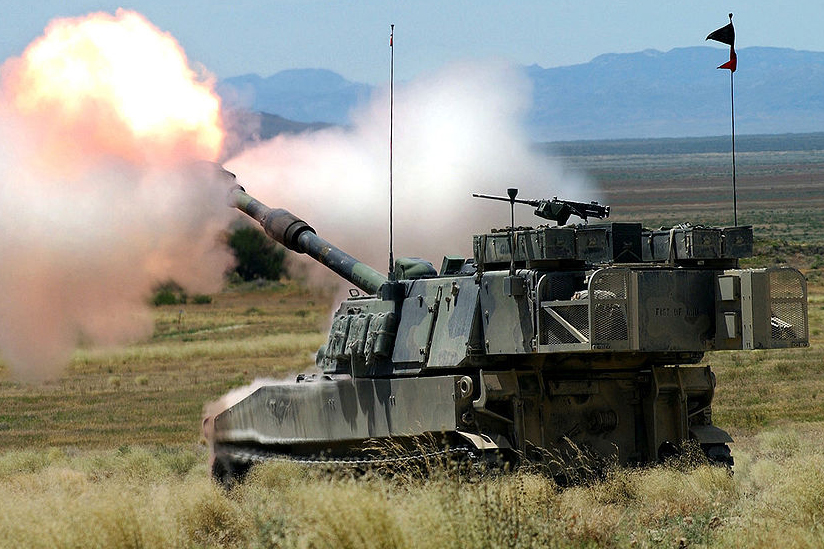
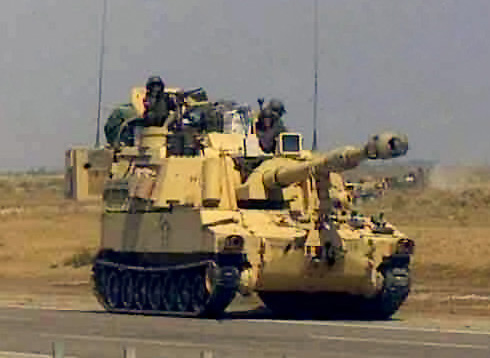
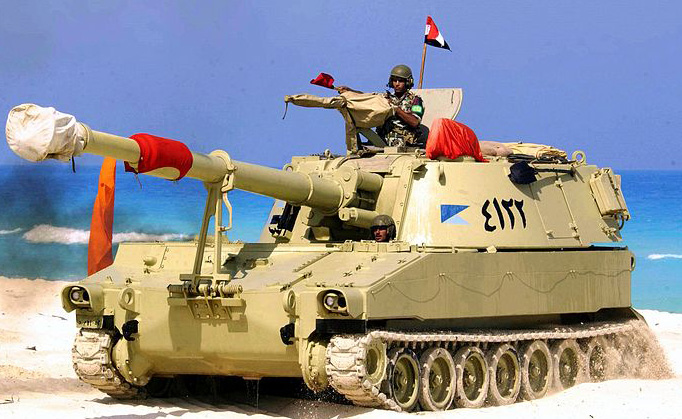
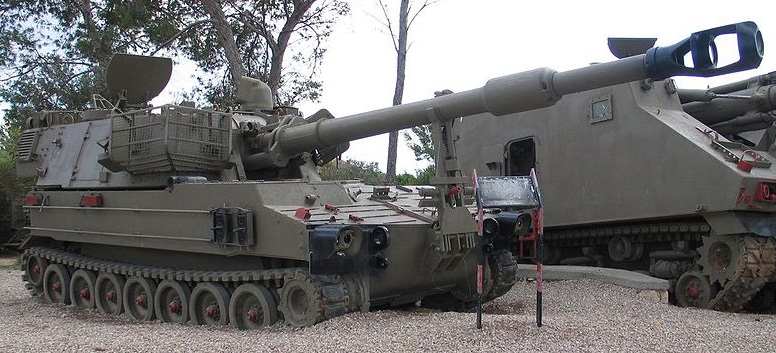
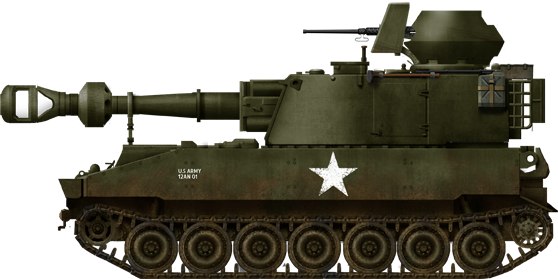
M109, early production, US Army Vietnam, 1965 or later.
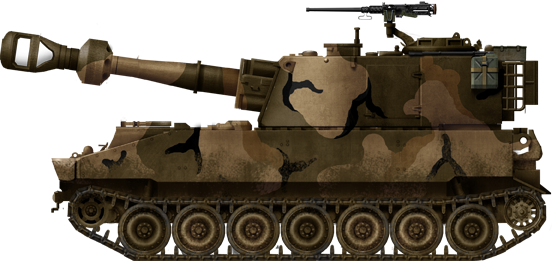
M109 MERDC, late 1970s.
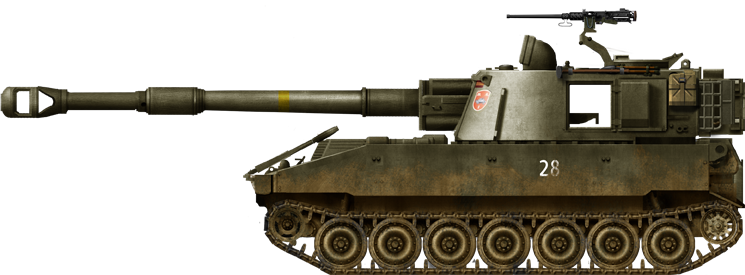
Spanish M109A1, of the Regimiento Artilleria de campana numero 11.

British M109A2, 2nd gulf war, 2003.
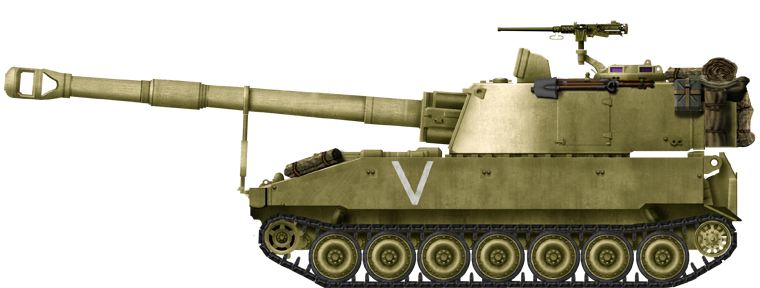
American M109A3, 1991 (1st) Gulf War.

M109A3 of the national guard

Canadian M109A4 - CFB Valcartier, Quebec, Canada gate guardian repainted with a fictional camouflage and markings.
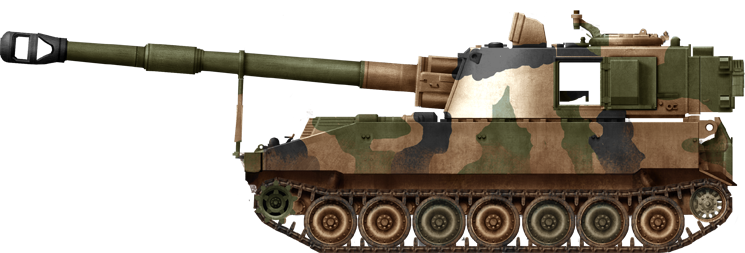
M109A5 of the Moroccan army

German Bundeswehr M109A5D
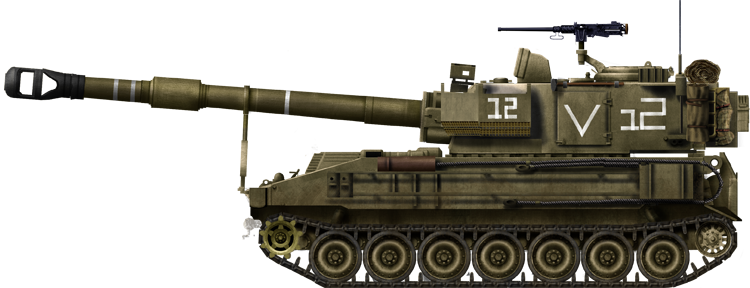
Israeli Defence Forces M109A5 Doher
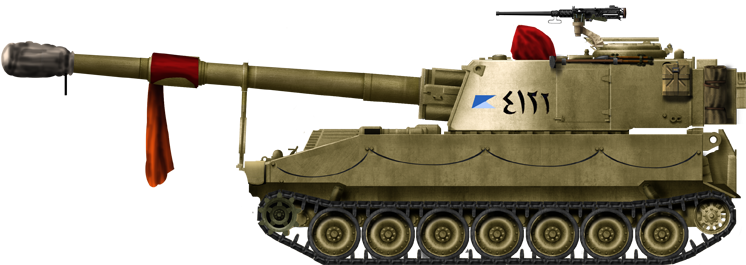
Egyptian M109A5

Swiss Panzerhaubitze M109 88-95 (ex.A1) Kampfwertsteigerung (KAWEST) modernized by Ruag from 1995.

M109A6 BAE PIM in evaluation. The illustration will be soon updated, showing the proper hull.

Cold War Tanks


































Cold war tanks posters

Cold War Main Battle Tanks

Cold War Soviet Army
Museums, Movies, Books & Games
The Tanks and Armor in pop culture
Tanks and armored vehicles in general are only really grasped when seen first person: The mass, the scale, it's all there. Explore also the way tanks were covered in the movie industry, in books and in video games.Movies:
Best tanks movie on warhistoryonline.com
On imdb.com
On bestsimilar.com/
miltours.com
liveabout.com/
watchmojo.com
Video Games:
pcgamesn.com
historyhit.com
levvvel.com
vg247.com/best-tank-games
mmobomb.com/
alienwarearena.com

